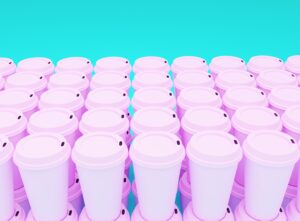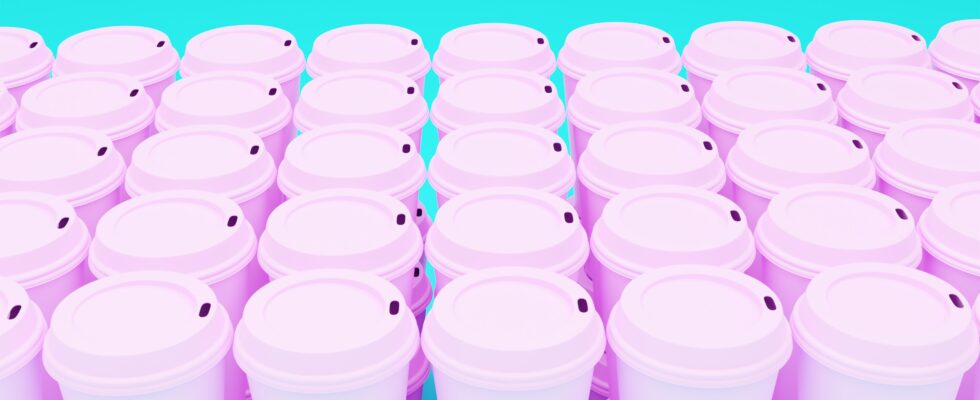 Although plastic provides a relatively inexpensive container that can protect taste and prolong the freshness of food, the shocking amount of unrecycled plastic packaging floating in oceans and washing onto beaches is driving public outcry and demand for changes.
Although plastic provides a relatively inexpensive container that can protect taste and prolong the freshness of food, the shocking amount of unrecycled plastic packaging floating in oceans and washing onto beaches is driving public outcry and demand for changes.
For food and beverage manufacturers, there is now pressure to re-think packaging strategies, revise go-to-market plans, and forge new supply chain partners. Fortunately, modern software solutions can help manage the multiple factors, starting with R&D and ending with consumer feedback.
The shift away from plastic packaging is like the proverbial, “back to the drawing board” mandate with complex ramifications. As manufacturers begin migrating to containers made of more environment-friendly materials, a wide variety of factors will be impacted, from package sizes to labelling and shipping. Old standbys like glass and paper will see a resurgence and single-use plastics may soon be phased out.
Costs and margins will also be influenced and manufacturers must determine what premium consumers are willing to pay for alternative forms of packaging and what conveniences they’re willing to forego to help reduce the environmental footprint of their favourite foods and drinks.
Food and beverage manufacturers have a massive job ahead of them. Consumers expect change and are increasingly making selections based on the social responsibility of the brand.
Unilever recently conducted a study which reveals one-third of consumers now buy from brands based on their social and environmental impact.
The study points to an unprecedented opportunity for companies that lead the way in sustainability. More than one in five (21 per cent) of the people surveyed said they would actively choose brands if they made their sustainability credentials clearer on their packaging and in their marketing. This represents a potential untapped opportunity of over $1 trillion.
Unilever is embracing a sustainability strategy in several of its brands, like Hellmann’s and Ben & Jerry’s. Results show the brands aligned with sustainability messaging are growing 30 per cent faster than the rest of the business.
Kraft Heinz announced its plans to make 100 per cent of its packaging recyclable, reusable or compostable by 2025. Aldi announced a similar initiative and timeframe, to convert its packaging to reusable, recyclable or compostable materials in six years.
Coca-Cola plans to recycle one bottle or can for each one it sells by 2030. In 2018, PepsiCo made a $10 million investment in The Recycling Partnership (TRP) to launch “All In On Recycling,” an industry-wide challenge to raise $25 million to improve the recycling infrastructure.
Packaging rethink
Market-savvy manufacturers will begin transforming their packaging strategies to better align with expectations of consumers but rethinking packaging is no simple project.
For example, evolving from a plastic cup with a pull-top seal to a glass jar with a screw-on metal lid brings many issues into consideration, from weight of the container, convenience for the consumer, ease of shipping, and loss due to breakage. The glass jar/metal lid option is much heavier and less convenient, making the single-serving packaging for lunch boxes impractical.
So, how can the product be repackaged so that it still fills the grab-and-go gap? Some market research and engagement with consumers may be required to formulate a new strategy.
The heavier glass container will affect shipping costs and require changes to shipping containers to prevent breakage. The new glass containers will also take up different retail shelf space and may require new merchandising. And, since the glass packaging is see-through, the appearance of the product will be more important than ever.
New machinery for filling, sealing, and labelling the glass containers will also be required. These considerations must be incorporated into a cohesive strategy – with the profit-impact carefully analysed.
Customer Relationship Management solutions can help track communications with customers and support customer engagement, from marketing campaigns to focus groups and websites, which explain the company’s sustainability story.
Traceability and the farm-to-fork journey is also closely tied to sustainability and can be highlighted on the company website. The entire customer experience can be enriched by using online customer portals and ecommerce tools as well.
Product Lifecycle Management solutions
Product Lifecycle Management (PLM) solutions help manufacturers track and monitor the entire lifecycle of a product, beginning with R&D and carrying through to product testing and pricing strategies.
A modern PLM solution will help the organisation simplify the complexity of revamping packaging, allowing managers to break tasks into steps for easy project management. The tool will also empower designated people to access packaging specifications, batch formulas, and research data around shipping needs so they can stay informed about transition progress and projections for new product launches.
The ability to access and share data helps individuals to collaborate and document strategy decisions, dynamic pricing algorithms, and go-to-market tactics, details which will be important for future reference.
Recipe and batch specifications may need to be adjusted to accommodate changes in packaging and serving sizes, and how the product will be prepared. Eliminating protective plastic layers may change the shelf-life, the freshness, or appearance of the food, calling for refinements in the recipes.
ERP solutions purpose-built for the food and beverage industry contain the functionality needed to refine such adjustments, guaranteeing consumers will be happy with the taste, aroma, and texture of their purchases.
Predictive analytics will be extremely helpful as manufacturers must consider costs of alternative packaging options and understand the bottom-line impact of new packaging resources. Changes to internal processes, like re-tooling machinery, as well as shipping ramifications will need to be considered carefully.
Managers will want to compare “what if” scenarios as they think through choices. Modern analytics, driven by artificial intelligence and machine-learning, will be critical to devising new strategies to align with the price-point consumers are willing to pay.
A connected supply chain network will also be more important than ever as the manufacturer will likely need to source new packaging resources, from new product containers and lids, to new types of material handling equipment and new shipping containers that can protect breakables or control temperatures.
A modern supply chain management solution will be valuable in forging new relationship with reliable vendors and deciding new shipping routes.
As consumers become more vocal about their expectations for sustainable packaging using less plastic, manufacturers will need to re-think their product lines and consider new packaging resources.
As the food and beverage industry makes this transformation, numerous internal process and go-to-market strategies will come into question. This is an opportunity to take a holistic view of the environmental impact of the brand.
Although the issues are complex, many affecting profitability, modern software technology will help simplify the decision-making, collaboration, and network-building among potential vendors.
This issue isn’t going to go away soon. Manufacturers that act now can be part of the solution, rather than part of the problem.
By Jarrod Kinchington, managing director, Infor ANZ
This article was first published by Food & Drink Business
